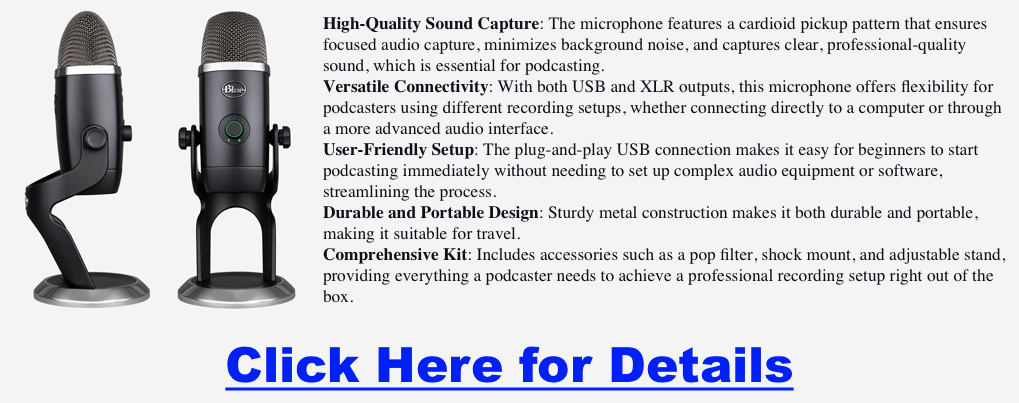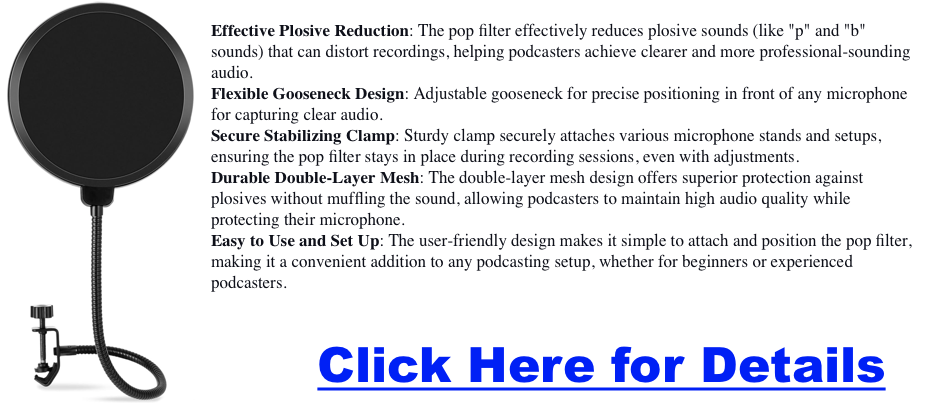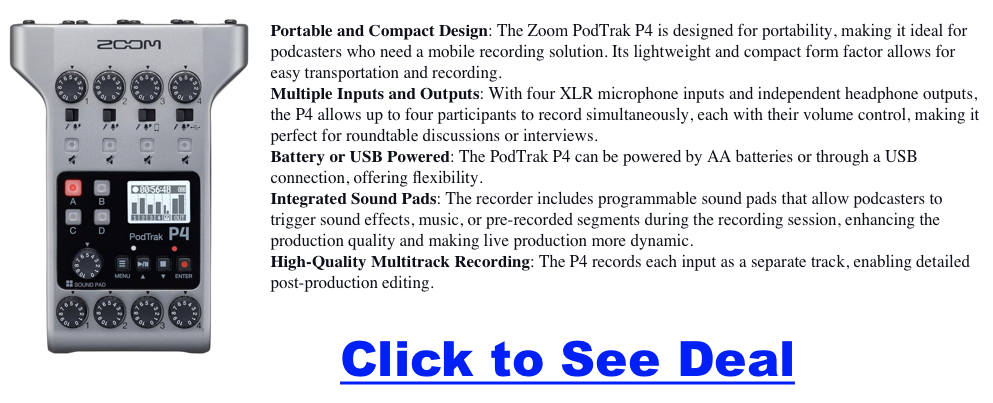What Equipment is Needed For a Podcast?
You don’t need a full studio setup to start podcasting—your phone, a quiet room, and some free software can get you going. In fact, you can launch your podcast with minimal investment. But if you’re aiming for a more polished sound, investing in some core gear makes a big difference—especially since audio quality directly impacts listener retention.
Starter Must-Have Equipment
Click here for my favorite podcast starter kit
- Microphone: Arguably the most important part of your setup.
- Headphones: Crucial for monitoring sound, reducing echo, and improving mic technique.
- Audio Interface: Needed for XLR mics; converts analog to digital. See our guide on mixers.
- Software: To record and edit your podcast cleanly.
Podcast Recording & Editing Software
- Free: Audacity, GarageBand (Mac)
- Paid: Adobe Audition, Logic Pro X, Hindenburg Journalist
Podcast Hosting: Your Launchpad
A podcast host distributes your episodes, stores them, and offers analytics and monetization tools.
Podcasting Starter Kits: Pros & Cons
Pros
- Convenience: Everything in one box.
- Compatibility: Components designed to work well together.
- Cost Savings: Bundled pricing is often cheaper.
- Quality Assurance: Often curated by trusted brands.
Cons
- Limited Customization: Not tailored to every use case.
- Overpay Risk: If you already own some items.
- Component Quality May Vary: Some parts may be better than others.
- Less Learning Opportunity: You miss learning-by-building.
Microphones
- USB vs XLR: USB is plug-and-play. XLR offers superior quality but requires an interface.
- Dynamic vs Condenser: Dynamic mics are more durable; condensers are more sensitive.
- Recommended: Blue Yeti (USB), Shure SM7B (XLR)
Pop Filters
- Materials: Nylon, metal, foam
- Mount Style: Clamp with gooseneck is most common
- Size: Larger filters offer better coverage
Audio Interfaces
- Choose based on number of mics you plan to use
- Look for quality preamps and low-latency support
- USB-C recommended for modern devices
Zoom PodTrak P4 (Portable Recording)
Records up to 4 mics, built-in sound pads, SD card slot, and battery-powered. Ideal for mobile creators.
Headphones
- Closed-back: Prevents mic bleed
- Comfort: Choose soft ear cups for long sessions
- Sound Accuracy: Critical for editing
Improve Your Recording Space
- Use rugs, curtains, or acoustic foam to minimize echo
- Small padded spaces like closets are effective
Computers for Podcasting
- Minimum 16GB RAM
- SSD storage for faster processing
- Quiet fan, multiple ports, strong CPU
Check our laptop guide for podcasting.
Podcast Cameras & Lighting
Podcast Hosting Comparison
Best DAWs for Podcasting
- Audacity (Free)
- GarageBand (Mac)
- Logic Pro
- Reaper
- Pro Tools
- Ableton Live / FL Studio / Cubase
Free Reports








